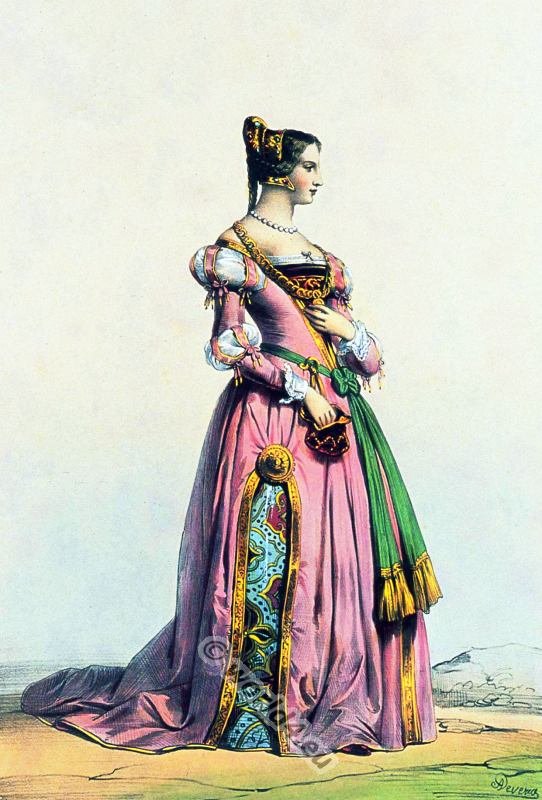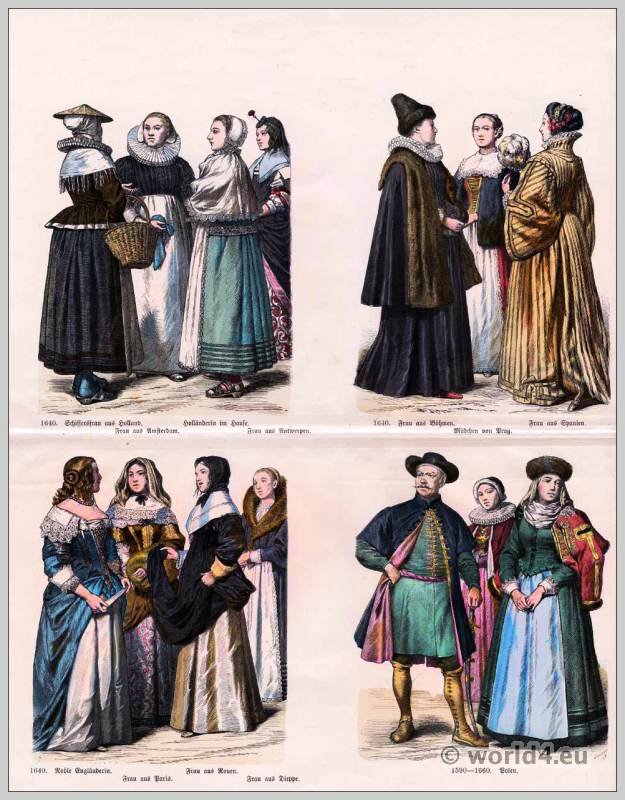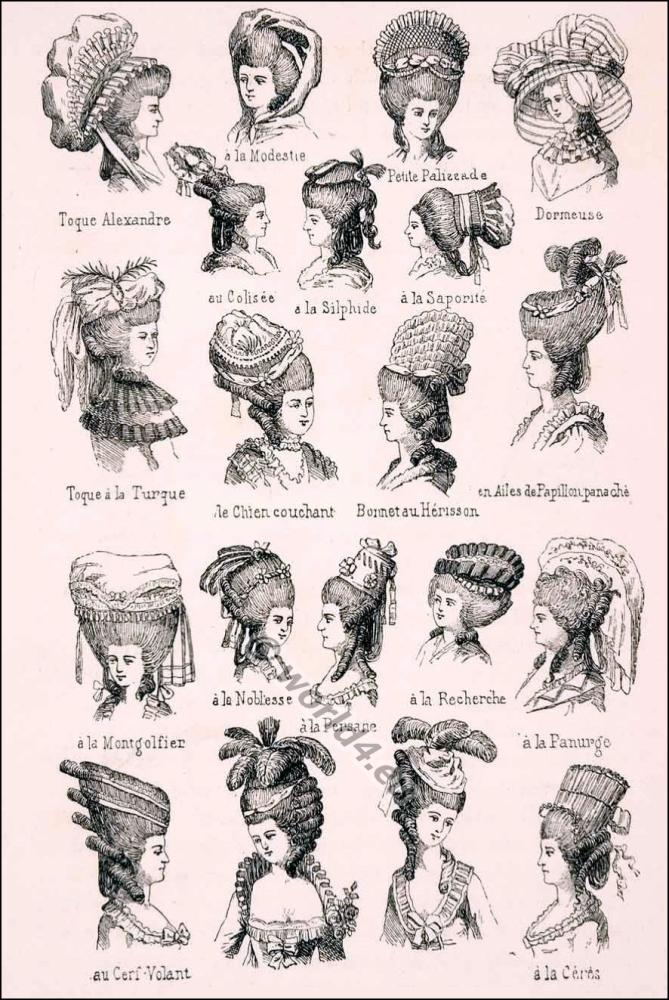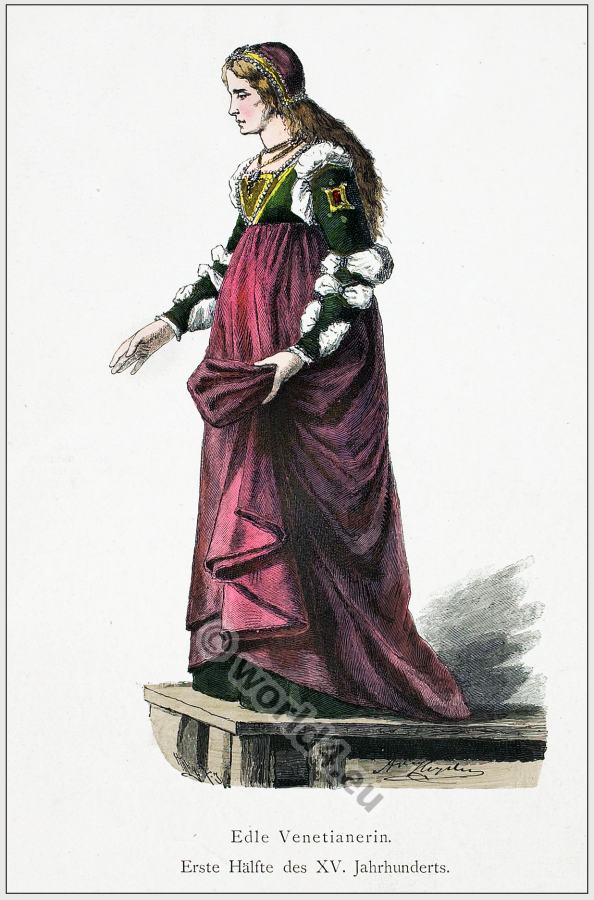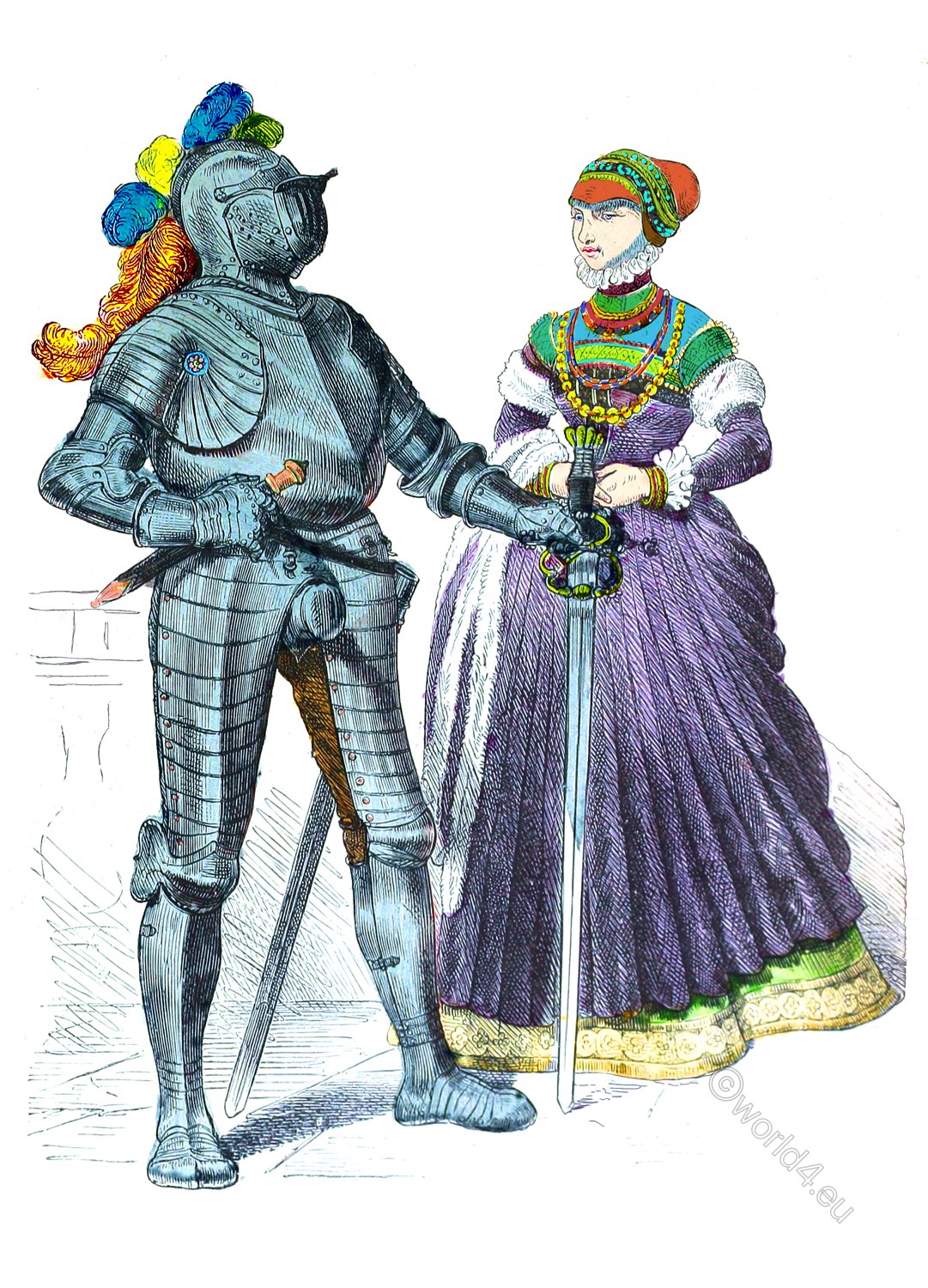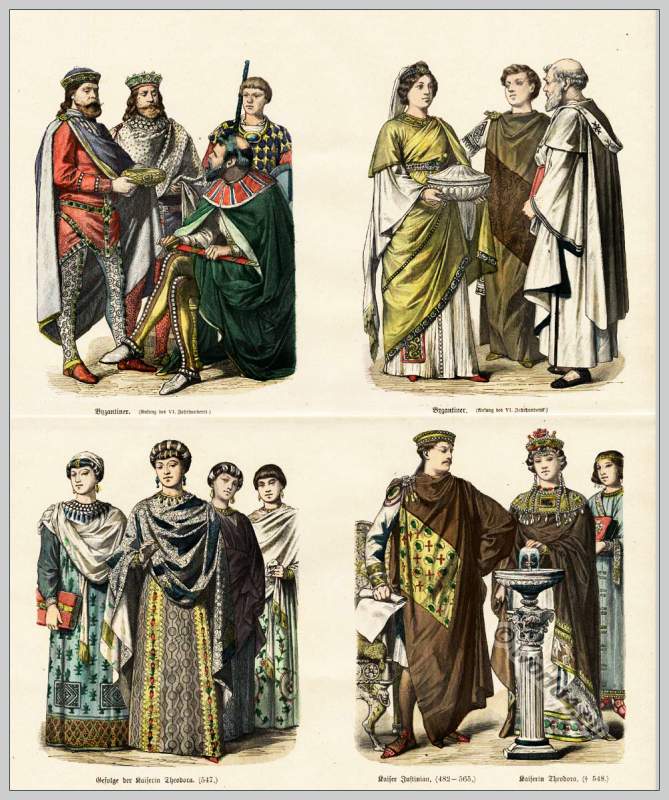THE SILHOUETTES OF THE SEVENTEENTH CENTURY
The disappearance of the hoop in the early years of the seventeenth century caused a change in the outline of the costume worn by the woman of fashion. Its influence, however, was still apparent in the drapery and puffing of the overskirt at the hips. The corset remained in fashion as did the fitted bodice, the waistline of which was somewhat pointed in front or, in some cases, raised slightly above the normal position and straight. Over the rather even, round length, underskirt was worn an overskirt which was open in front, its fullness falling in long, graceful folds, or arranged in draperies at the sides. This overdress was frequently very long and trailing.
The neckline of the early seventeenth century bodice was usually round and finished with a wide collar, either flat or wired to stand away from the head, With the long, full, slashed sleeves were worn the turned-back cuffs, lace-edged to repeat the decoration of the collar.
In the latter part of the century, during the reign of Louis XIV (1643-1715), there was greater elaboration of detail in costume, while the general lines remained unchanged. The sleeves decreased in fullness and length, reaching to the elbow, and were finished with soft ruffles. The large collar and cuffs of the earlier years disappeared, while the neckline, as a rule, adhered more closely to the neck at the sides than formerly.
The passing of the ruff from the realm of fashion permitted a low dressing of the hair, which was knotted in the back and worn in soft curls about the face until 1680 when the elaborate coiffure à la Fontage became the favourite of the fashionable world.
The materials of the seventeenth century were exceedingly rich and decorative. Heavy satins, brocades, and velvets, as well as handsome transparent fabrics added to the effectiveness of the costume.

QUESTIONS
- Make a study of the portraits of the seventeenth century; then cut in muslin, or other practice material, several collars similar in line to those in the portraits and try the collars on various classmates. Note what effect the falling, broad collar has on a person with:
a. Square shoulders.
b. Sloping shoulders.
c. A long, slender neck.
d. Hair dressed high on the head. - Compare the collars and cuffs of the Puritans of New England, with those worn by the French and English at this time.
- Make a collection of samples of materials, which would be suitable for use in obtaining silhouettes, similar to those in Figs. 8 and 9.
Costume silhouettes by Mary Evans. Philadelphia, J.B. Lippincott Company 1923.
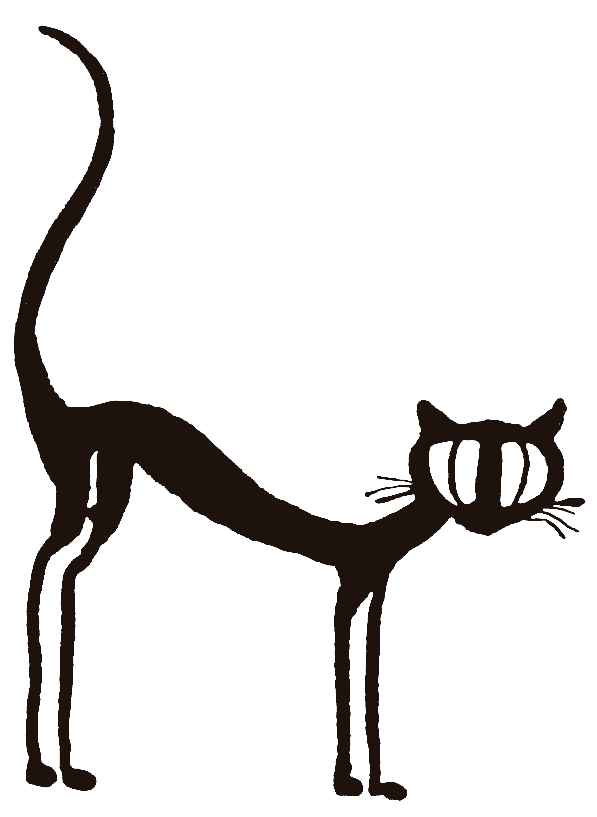
Continuing
Discover more from World4 Costume Culture History
Subscribe to get the latest posts sent to your email.



